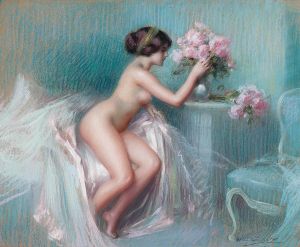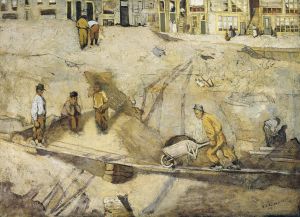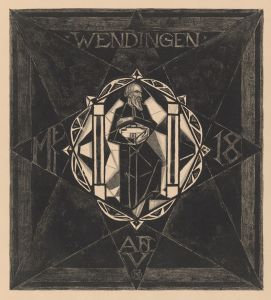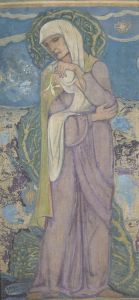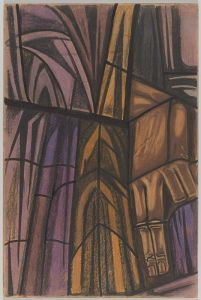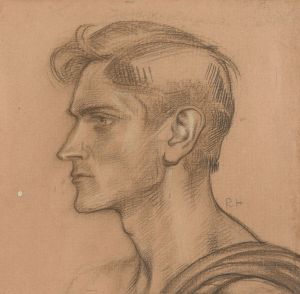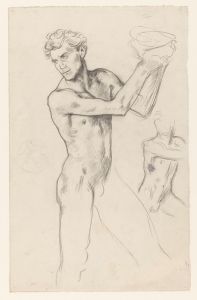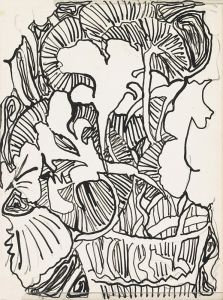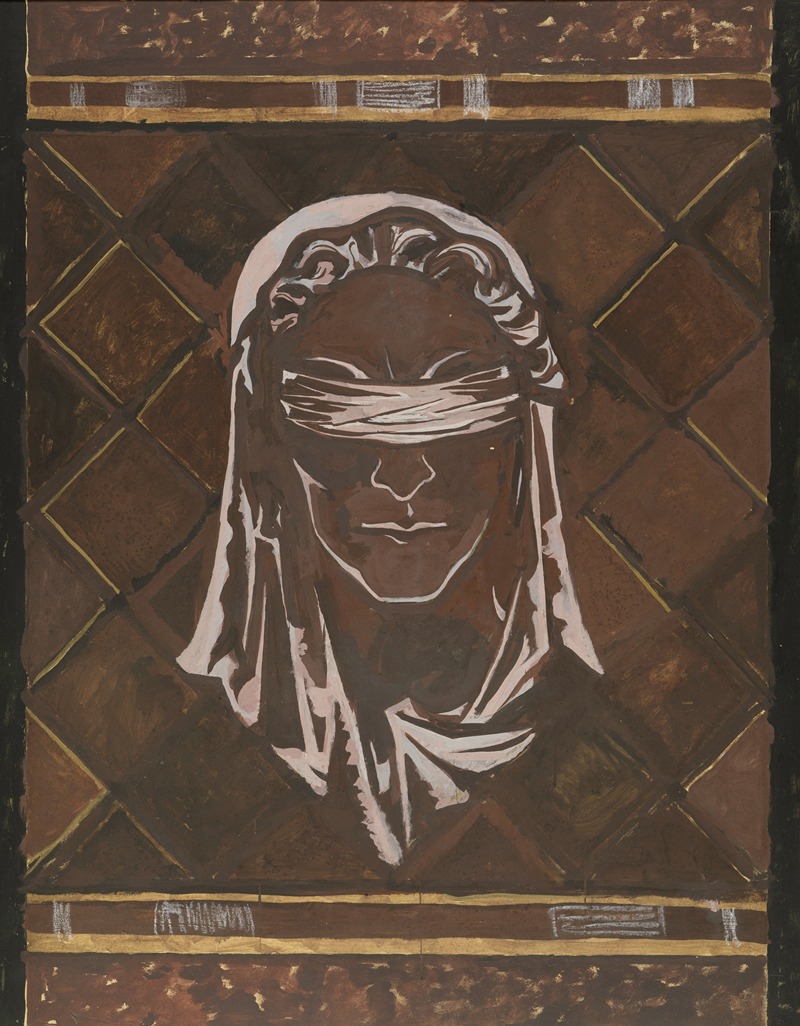
Kop van de geblinddoekte Justitia; ontwerp voor figuur van de marmerdecoratie in de Hoge Raad te Den Haag
A hand-painted replica of Richard Nicolaüs Roland Holst’s masterpiece Kop van de geblinddoekte Justitia; ontwerp voor figuur van de marmerdecoratie in de Hoge Raad te Den Haag, meticulously crafted by professional artists to capture the true essence of the original. Each piece is created with museum-quality canvas and rare mineral pigments, carefully painted by experienced artists with delicate brushstrokes and rich, layered colors to perfectly recreate the texture of the original artwork. Unlike machine-printed reproductions, this hand-painted version brings the painting to life, infused with the artist’s emotions and skill in every stroke. Whether for personal collection or home decoration, it instantly elevates the artistic atmosphere of any space.
Richard Nicolaüs Roland Holst was a prominent Dutch artist known for his contributions to various forms of art, including painting, drawing, and decorative arts. One of his notable works is "Kop van de geblinddoekte Justitia; ontwerp voor figuur van de marmerdecoratie in de Hoge Raad te Den Haag," which translates to "Head of the Blindfolded Justice; design for the figure of the marble decoration in the Supreme Court in The Hague."
This work was created as part of a larger project for the Supreme Court of the Netherlands, located in The Hague. The piece is a design for a marble decoration, specifically focusing on the allegorical figure of Justice, a common theme in legal and governmental buildings. Justice is traditionally depicted as a blindfolded woman holding scales and a sword, symbolizing impartiality, fairness, and the power of law. Roland Holst's interpretation of this figure aligns with these traditional symbols, yet it also reflects his unique artistic style and the broader artistic movements of his time.
Roland Holst was deeply influenced by the Arts and Crafts Movement, which emphasized craftsmanship and the integration of art into everyday life. This influence is evident in his attention to detail and the harmonious composition of his designs. His work on the Supreme Court decoration project was part of a broader effort to incorporate art into public buildings, making them not only functional spaces but also places of aesthetic and cultural significance.
The design for the marble decoration was intended to convey the ideals of justice and the rule of law, core principles of the judicial system. By choosing to depict Justice as blindfolded, Roland Holst reinforced the notion of impartiality, suggesting that justice should be administered without bias or prejudice. The design's focus on the head of Justice highlights the intellectual and moral aspects of the legal process, emphasizing the importance of wisdom and ethical judgment in the pursuit of justice.
Richard Nicolaüs Roland Holst's work on this project is a testament to his skill as an artist and his commitment to integrating art into public life. His contributions to the Supreme Court in The Hague are part of a legacy that includes numerous other public and private commissions, reflecting his status as a leading figure in Dutch art during the late 19th and early 20th centuries.
Overall, "Kop van de geblinddoekte Justitia" is a significant example of Roland Holst's work, illustrating his ability to blend traditional themes with contemporary artistic sensibilities. It serves as a reminder of the enduring power of art to convey complex ideas and values, particularly in the context of public institutions dedicated to upholding justice and the rule of law.





